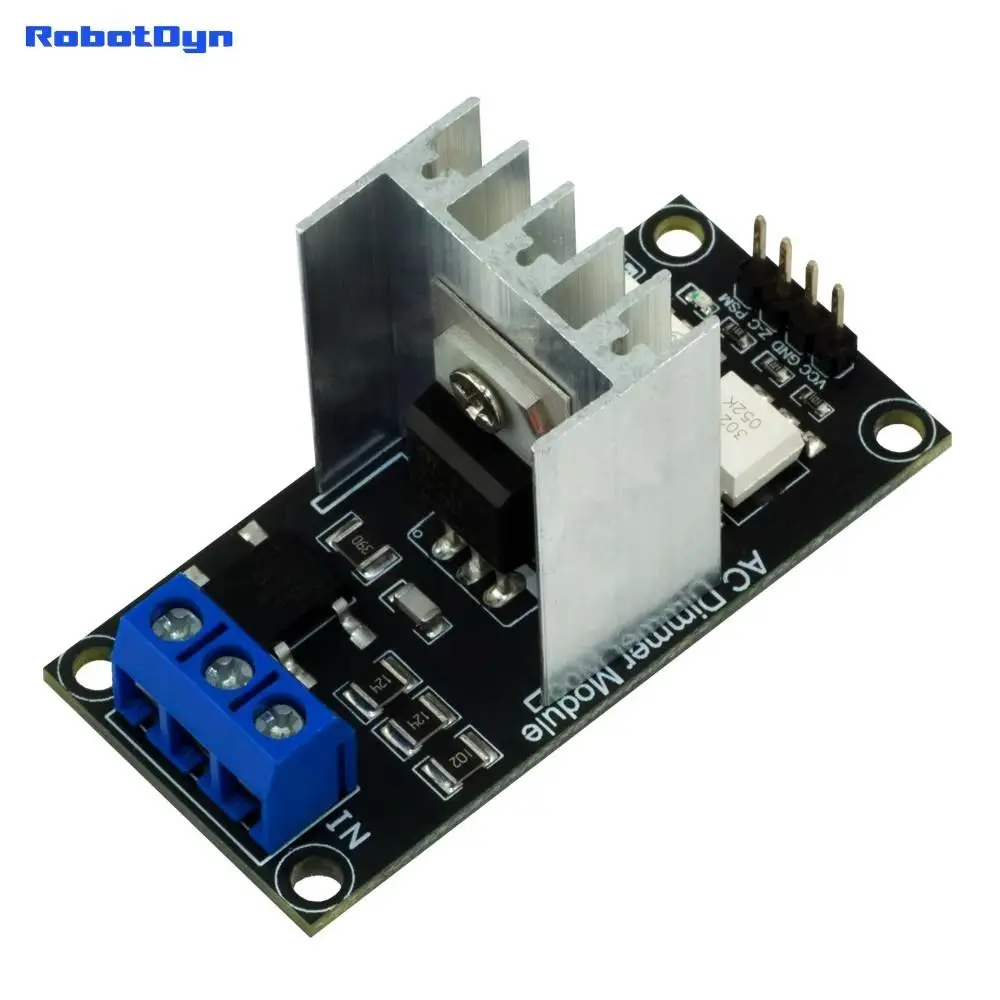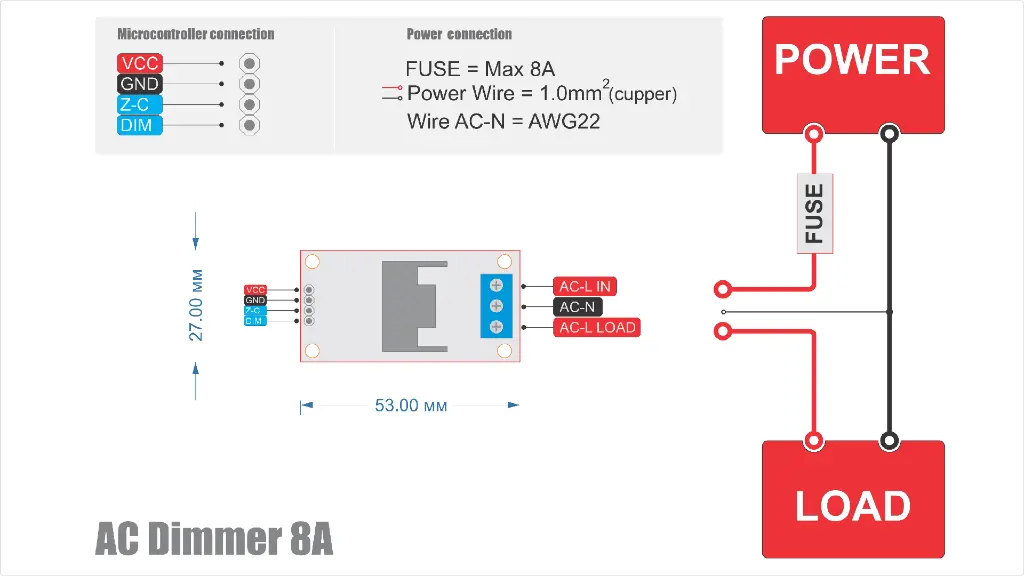AC Dimmer Module 8A, 1 channel, 3.3V/5V logic, AC 400V-8A
The AC Dimmer is a DIY module—not a finished device—that you integrate into your project by connecting it to your microcontroller. Designed to regulate alternating current (AC) voltage, it safely handles up to 8A. Originally designed for smooth control of lamps and heating elements—not merely simple on/off switching—this versatile module also supports adjustable operation for fans, pumps, air purifiers, and more.
This dimmer is especially useful for smart home projects. With our comprehensive tutorials and user guides, you can build a fully customized solution. For example, you might:
- Adjust lighting: Gradually turn lights on or off to create a comfortable ambiance.
- Automate your home: Connect the module to cloud services like HomeAssistant or even control it with voice assistants.
- Save energy: Program schedules for turning devices on and off, reducing energy consumption.
We provide extensive documentation and instructions not only for Arduino but also for other platforms. You can find guides on using the ESPHome component for integration and automation through HomeAssistant, as well as detailed instructions for connecting and configuring the Tasmota application. These resources ensure that whether you're using Arduino, ESP32, or another platform, you have all the support you need.
The dimmer’s design separates the high-power AC section from the low-power control section to protect your microcontroller. It supports both 5V and 3.3V logic levels, making it a great match for popular platforms such as Arduino and ESP32. The rbdimmerESP32.h library simplifies control by managing interrupts and timing, allowing you to focus on expanding your project’s features without complex coding.
Whether you’re creating a simple DIY lighting system or a more advanced smart home setup, our extensive support resources are here to guide you every step of the way.
Technical characteristics:
Weight: 0.019 kg
Dimensions: 8 × 4 × 4 cm
Maximum Voltage: 400V AC
Maximum Current: 8A
AC Frequency: 50/60 Hz
TRIAC: BTA16-600B
Isolation: Optocoupler
Logic Levels: 3.3V/5V/12V
Zero Crossing Detection: Digital logic signal from microcontroller
Signal Current: >10mA
Universal library for ESP32
The AC Dimmer Library rbdimmerESP32 is an efficient solution for controlling the brightness of alternating current (AC) devices using an ESP32 family microcontroller. The library leverages ESP32 hardware capabilities, such as GPIO interrupt processing and high-precision timers, to precisely control the TRIAC activation moment in each half-cycle of alternating current.
Library Guide abd Download: Universal library for ESP32 | RBDIMMER
- Compatible with Arduino, ESP-IDF, and ESPHome frameworks
- Compatible with multi-phase systems
- Support for multiple independent dimming channels
- Minimal processor resource usage thanks to hardware interrupts and ESP timers
- High-precision brightness control for AC devices
- Various brightness regulation curves (linear, RMS, logarithmic)
- Automatic detection of grid frequency (50/60 Hz and others)
- Smooth transitions between brightness levels
- Support for callback functions for synchronization with other events
Documentation
- Dimmer selecting
- Wiring. Hardware connection diagram
- Arduino guide and examples
- ESP-IDF fraimwork guide and examples
- ESPHome external component
Join the DIY Community & Share Projects!
Are you working on a DIY smart home project? Need help with your dimmer setup? Join our community of makers, developers, and automation enthusiasts!
Forum
Blog Projects
AC dimmer projects
- including integration with IoT services and smart home control panels.
Product Support
Contact technical support
- get help with setup, compatibility, or troubleshooting.





